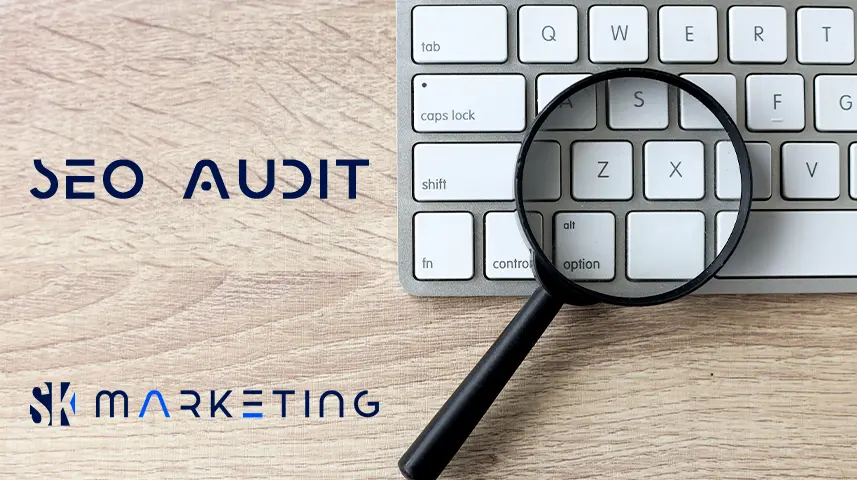
SEO audit allows you to identify the strengths and weaknesses of the site in terms of search engine optimization. It helps to detect technical errors, assess the quality of content, check the correctness of indexing and the operation of the link structure. As a result of the audit, a list of recommendations aimed at improving the position of the site in the search results and increasing its attendance is formed.
Why do you need an SEO audit?
SEO audit helps to identify and eliminate errors that prevent the site from occupying high positions in search engines. Analysis of technical parameters allows you to understand how fast the pages load, whether there are problems with the mobile version, whether the indexing settings are correct, whether redirects work correctly and whether there is no duplicate content. Content audit helps to determine the relevance of texts, the presence of keywords, their density and compliance with user search queries.
Internal relinking is evaluated for logic and efficiency to ensure ease of navigation for users and search robots. External links are analyzed for quality, thematic relevance and naturalness, malicious or irrelevant links that may worsen the position of the site are identified. As a result of the audit, recommendations are formed that help to eliminate the identified problems and increase the visibility of the resource in the search results, attracting more targeted traffic.
The main stages of SEO audit
1. Technical analysis of the site
The first step is to check the technical condition of the site. This includes:
-
Page loading speed and adaptability for mobile devices.
-
Correct code and setting up redirects.
-
HTTPS availability and site security.
-
Optimization of CSS, JS and image files.
2. Indexing and visibility analysis in search engines
How do search engines see your website? Checked:
-
Correctness of robots.txt and sitemap.xml.
-
Availage of duplicate pages.
-
URL structure and configuration of canonical links.
3. Content audit
Content is the basis of successful SEO. The assessment includes:
-
Uniquity and relevance of materials.
-
Use of keywords and their density.
-
Optimization of headers, meta tags and alt descriptions of images.
4. Internal linking and site structure
Search engines appreciate logical navigation. Checked:
-
Page nesting depth.
-
Number of internal links.
-
Avail of broken links.
5. Reference profile analysis
SEO is impossible without high-quality external links. It is important here:
-
Determine the number and quality of backlinks.
-
Find toxic links and delete them.
-
Analyze anchor sheets.
SEO audit tools
Specialized tools are used to SEO audit, each of which performs a specific task:
Google Search Console is a key tool for analyzing the interaction of the site with the Google search engine. It allows you to track page indexing, identify scanning errors, check which requests lead users to the site, and control the correctness of the robots.txt file and sitemap.xml sitemap. In addition, the service helps to find problems with the mobile version, evaluate the performance of Core Web Vitals and check the status of manually sent URLs for indexing. All this data helps to respond quickly to problems and improve the visibility of the resource in the search.
Google Analytics tool for in-depth analytics of web resources. It allows you to track the number of visitors, their geographical location, behavioral models and devices from which they enter the site. An important function is the analysis of traffic sources: organic search, advertising, social networks or direct visits. In addition, the service helps to evaluate the effectiveness of individual pages, identify user outflow points and determine which elements require revision. Google Analytics also provides information about conversion, time spent on the site and bounce rate, which makes it possible to adjust your marketing strategy and improve interaction with the audience.
Ahrefs, SEMrush and Moz help to study the reference profile, identify the weaknesses and strengths of competitors, analyze keywords and determine the promotion strategy.
Screaming Frog scans the site, finding technical errors, duplicate pages, problems with redirects and incorrect meta tags. The use of these tools in the complex gives a complete picture of the current state of the site and allows you to develop a plan for its optimization.
How to use the audit results?
After the SEO audit it is important not only to identify problems, but also to competently implement changes that will lead to an increase in positions in search engines. The first step is to prioritize: technical errors and critical problems should be corrected first, as they interfere with the normal functioning of the site.
This may include setting up redirects, eliminating broken links, correcting duplicate content and optimizing page loading speed.
After eliminating technical shortcomings it is necessary to focus on the content. Texts should be refined taking into account the audit recommendations: improve the structure, add missing keywords, increase uniqueness and readability. It is important not to forget about internal links, as competent linking improves page indexing and link weight distribution.
At the next stage, it is worth working out external SEO factors, including the reference profile. It is necessary to remove malicious links, analyze competitors and develop a strategy for building up high-quality external links.
Audit results also help to adjust the marketing strategy: you can improve user experience, make changes to the structure of the site, analyze behavioral factors and adjust advertising campaigns. It is important not to forget that SEO is a continuous process, and regular monitoring of indicators will help to respond quickly to changes in search engine algorithms and maintain high positions in the results.
SEO audit is not a one-time procedure, but a constant process of improving the site. Regular site analysis and work with identified errors will help strengthen the site's position in search engines and attract more target audience.


 Sergey Kozlov
Sergey Kozlov